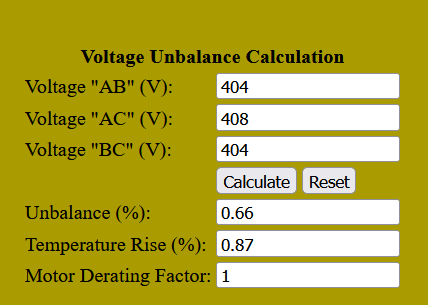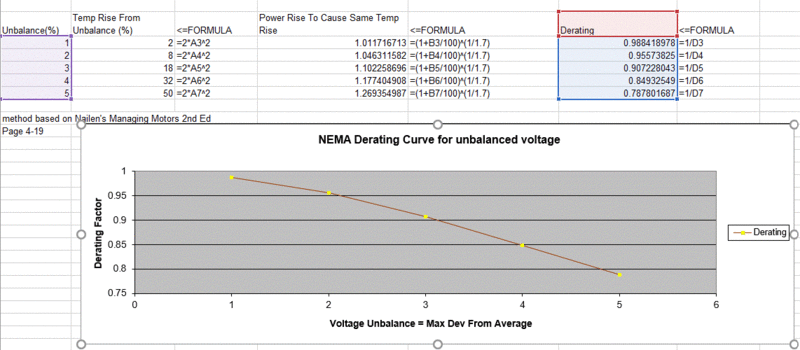InvisibleElect
Electrical
We have two identical 110kW, 199A FLC,415V LV Motors (star-delta starter)in plant for N2 compressor application. By measuring current manually in 3 phases by three calibrated clamp meters, we observed as below at low pressure (unloading)
Motor A Unbalance in reading. (L1=178A,L2=194A,L3=184A at Voltage L1L2=404V,L2L3=408V,L1L3=404V) When I calculated by SQRT method, average current is found 185A by sqrt (SQ of currents/3) and Voltage unbalance is 0.5% by (Max-Average)/Average. Ratio of Current Unbalance/V unbalance is calculated as 8.9
Motor B Unbalance in reading. (L1=182A,L2=195A,L3=187A at Voltage L1L2=404V,L2L3=408V,L1L3=404V) When I calculated by SQRT method, average current is found 186A by sqrt (SQ of currents/3) and Voltage unbalance is 0.5% by (Max-Average)/Average. Ratio of Current Unbalance/V unbalance is calculated as 9.5
Motor temperature in both is normal and additional cooling fan is also provided for this enclosed unit.
As we know current unbalance can reach up to 10x voltage unbalance at full load, in our case it is less than 10. Will the 9.84 in motor B is a worry ?
Motor A Unbalance in reading. (L1=178A,L2=194A,L3=184A at Voltage L1L2=404V,L2L3=408V,L1L3=404V) When I calculated by SQRT method, average current is found 185A by sqrt (SQ of currents/3) and Voltage unbalance is 0.5% by (Max-Average)/Average. Ratio of Current Unbalance/V unbalance is calculated as 8.9
Motor B Unbalance in reading. (L1=182A,L2=195A,L3=187A at Voltage L1L2=404V,L2L3=408V,L1L3=404V) When I calculated by SQRT method, average current is found 186A by sqrt (SQ of currents/3) and Voltage unbalance is 0.5% by (Max-Average)/Average. Ratio of Current Unbalance/V unbalance is calculated as 9.5
Motor temperature in both is normal and additional cooling fan is also provided for this enclosed unit.
As we know current unbalance can reach up to 10x voltage unbalance at full load, in our case it is less than 10. Will the 9.84 in motor B is a worry ?


